Villagers thought Spanish cartoonist was a WW2 spy
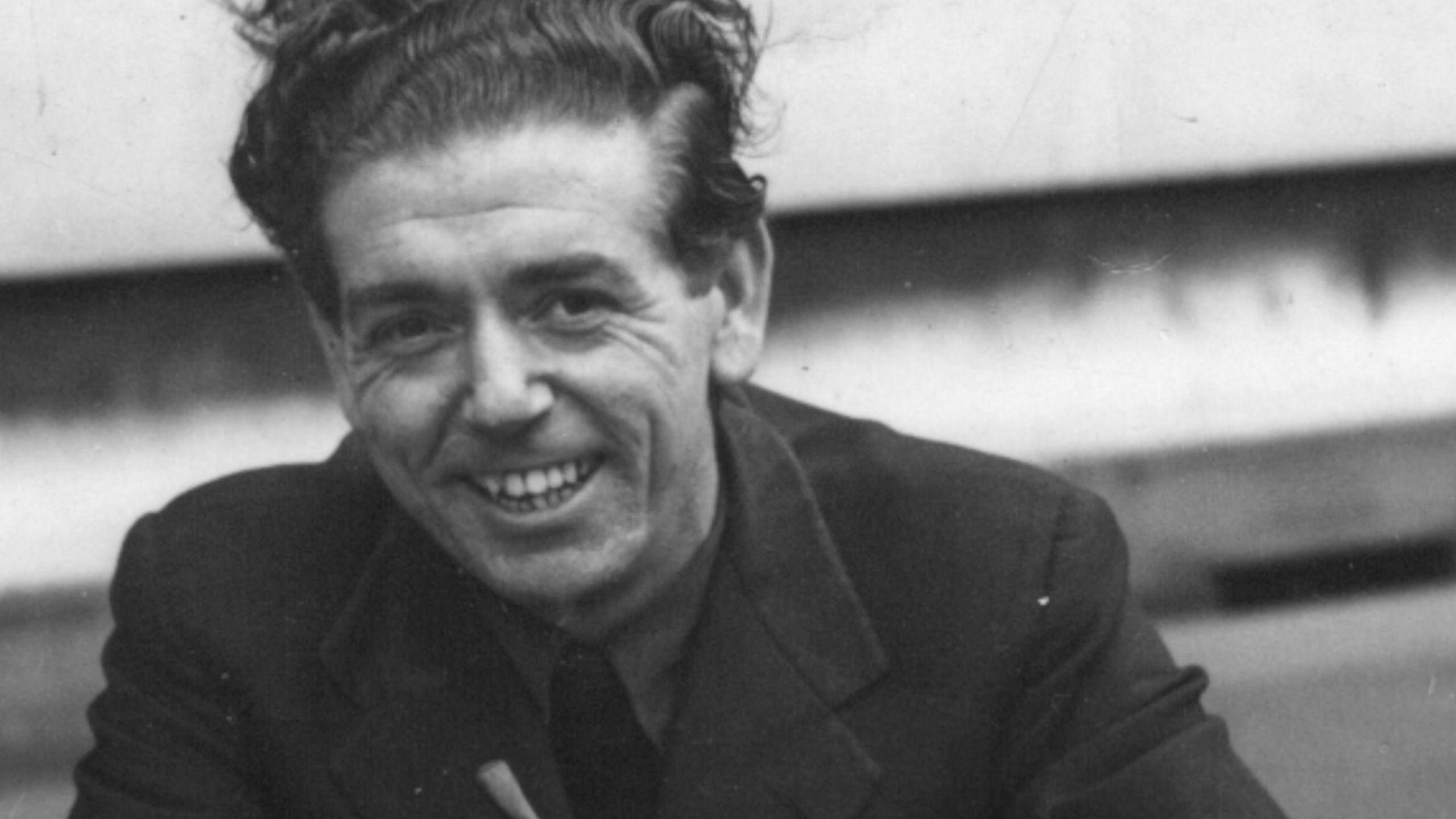
After initial suspicion Mario Armengol became well liked in Nottinghamshire
- Published
Eighty years ago during World War Two, a Spanish artist found himself with an unlikely job, being paid by the British government to draw satirical cartoons of the enemy, from a quiet Nottinghamshire village.
Lindah Kiddey said villagers in Laneham were initially suspicious of their resident artist Mario Armengol, with some believing "he must be a spy".
In fact, he was working to support the government's propaganda effort, creating cartoons which poked fun at Hitler and his army.
Mr Armengol's story is to be the subject of a new documentary which is currently being developed by Spanish journalists.
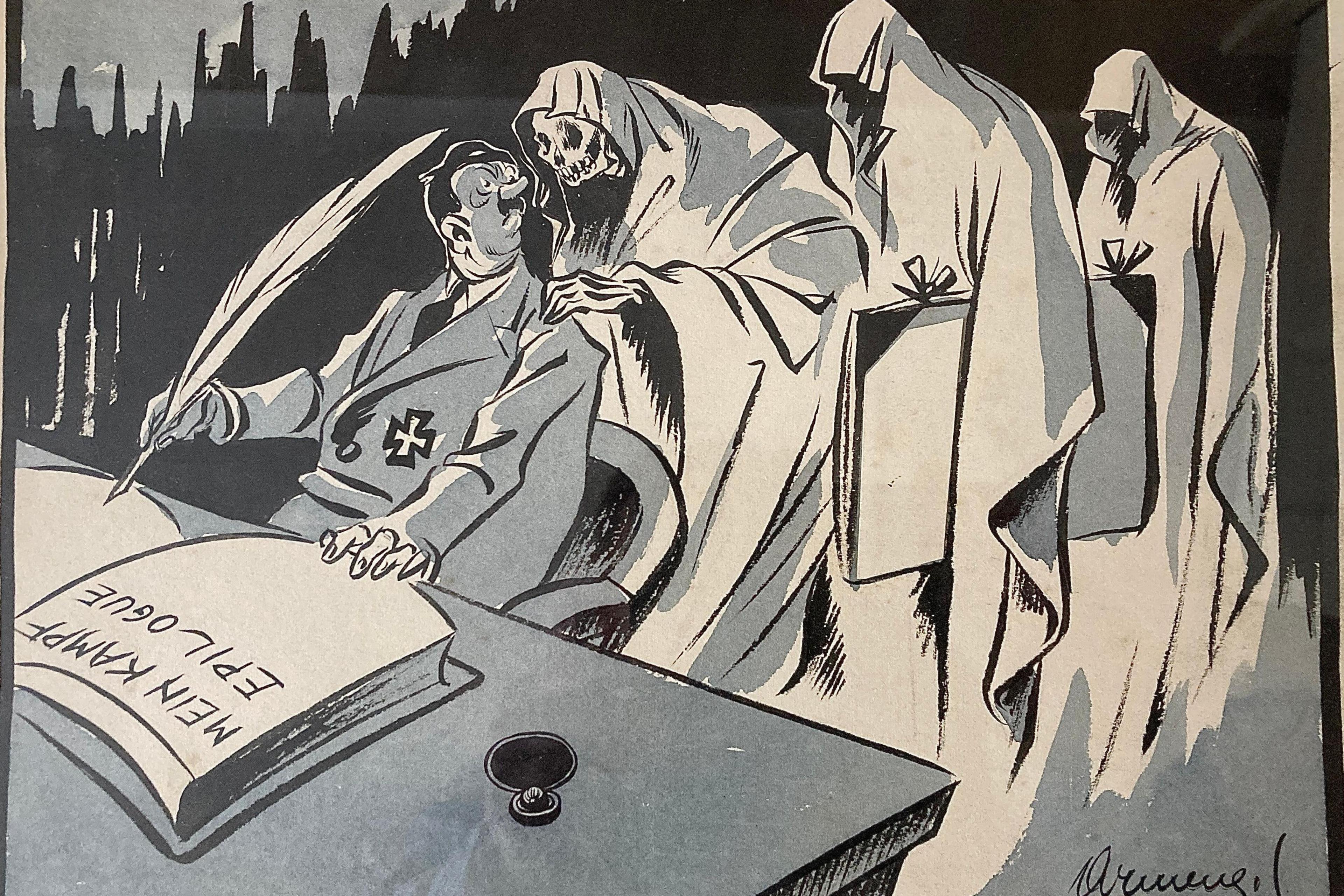
One of Mario Armengol's cartoons, predicting a dark outcome for Hitler
But how did an artist from Catalonia come to be in Nottinghamshire during World War Two?
Ms Kiddey, from Radcliffe-on-Trent, whose mother Rolindez De Madariaga had a long relationship with Mr Armengol, despite them both marrying other partners, is one of the people who is helping to tell his life story.
She said the artist was born in 1909 in San Juan de las Abadesas, near the Pyrenees and was put on a list of "undesirables" due to his political beliefs during the Spanish Civil War in 1938.
Although he was married, he left the country and crossed into France, where he was arrested and joined the Foreign Legion.
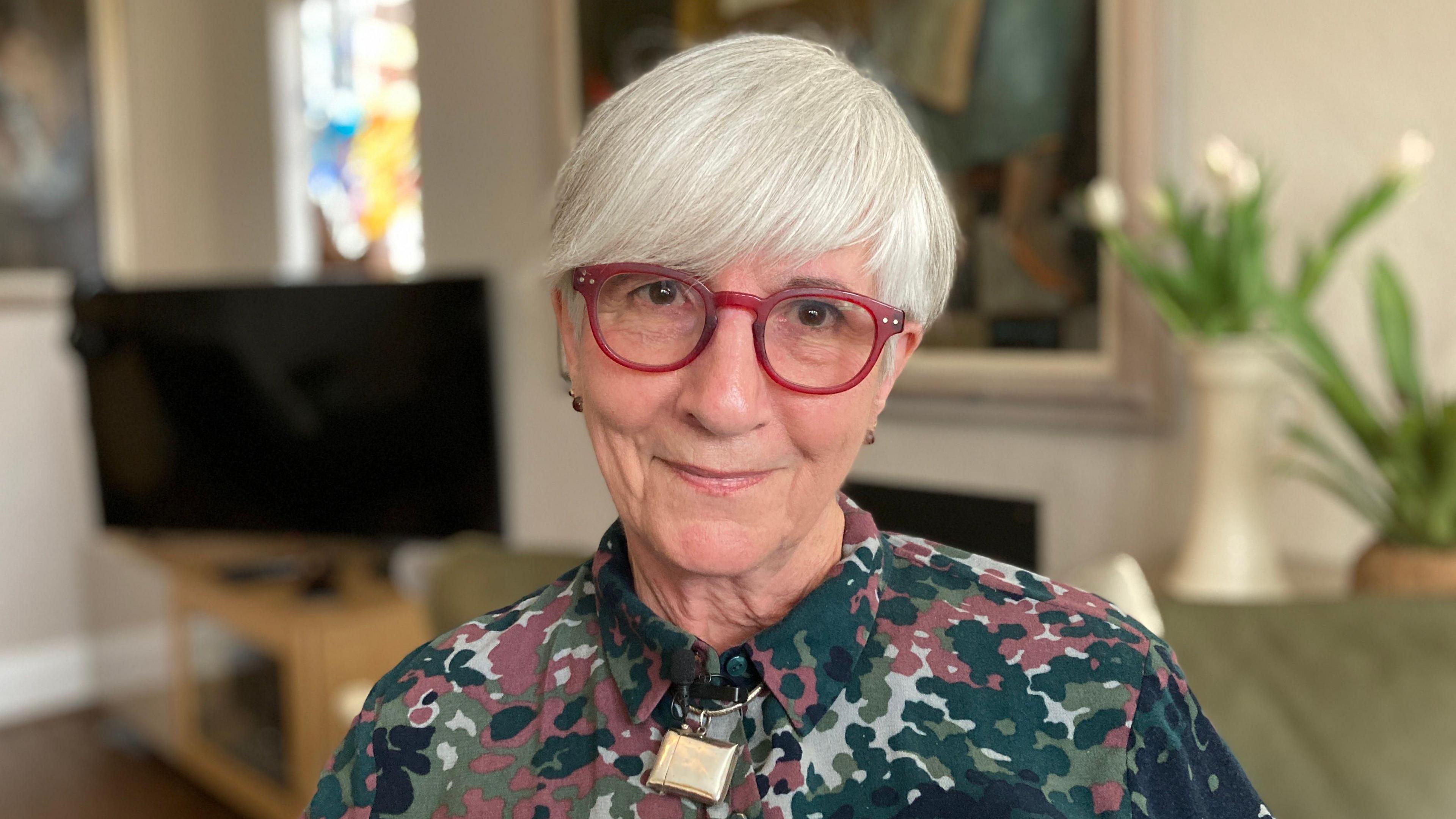
Lindah Kiddey says Mr Armengol was her mother's "soul mate"
Mr Armengol was eventually posted to Britain in July 1940, where he was given permission to stay and met Ms Kiddey's mother at her family's Spanish restaurant in Liverpool, where they formed a connection.
Ms Kiddey said he was suffering from "shell shock" now known as post-traumatic stress disorder (PTSD) due to experiences in the Spanish civil war and the ongoing World War Two.
Mr Armengol moved from London to the quiet village of Laneham, where he began work creating cartoons for the British Ministry of Information, ultimately drawing about 2,000 cartoons and artworks to support propaganda efforts.
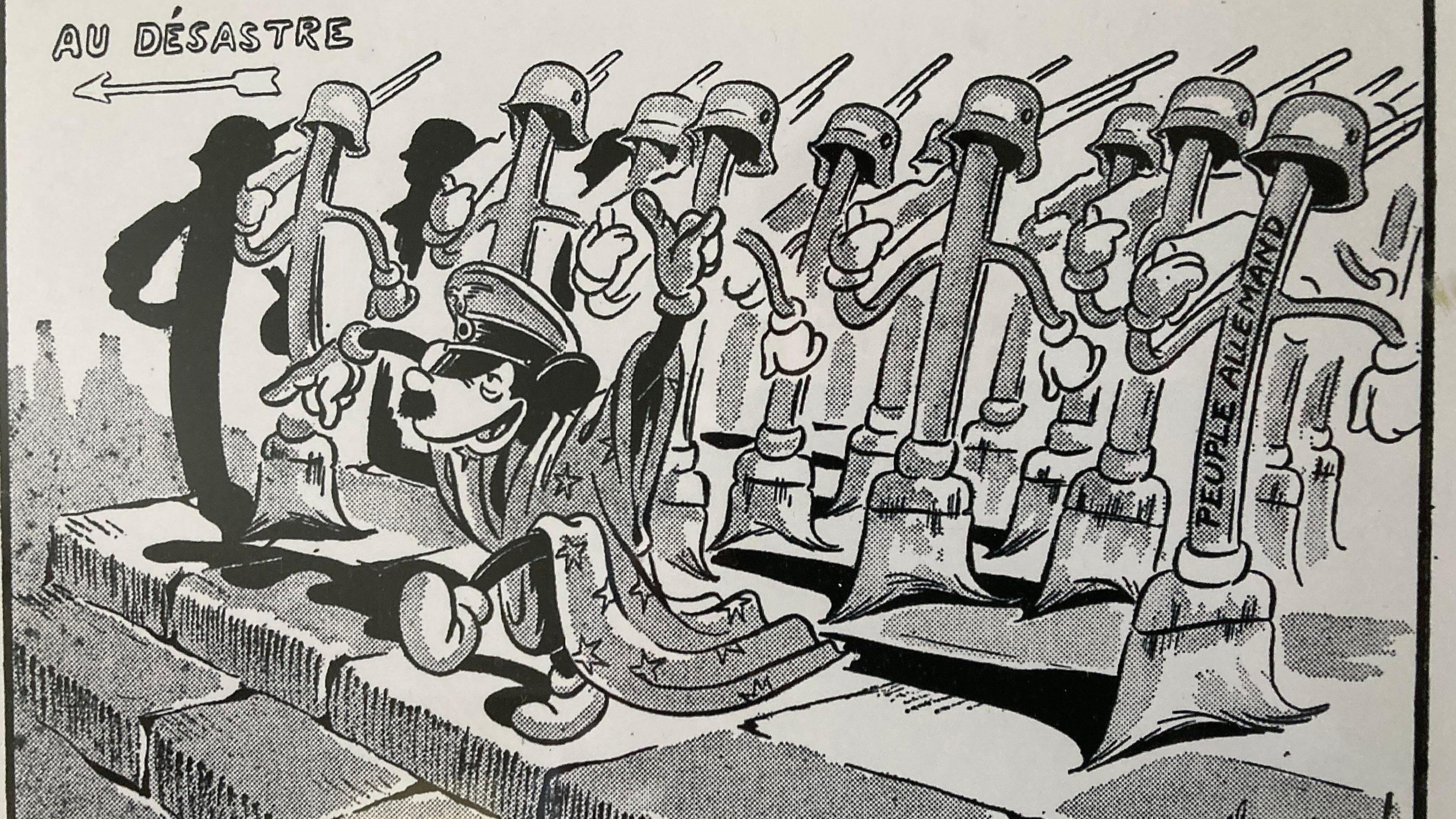
Mario Armengol's cartoon suggesting Hitler is marching to disaster
Ms Kiddey said: "The good citizens of Laneham, a tiny village, were basically farmers and they'd never seen a foreign person before, let alone a man with a strong accent, wearing a beret, who was sending these large parcels on a weekly basis through their tiny post office to His Majesty's government, so they thought he must be a spy."
But, she said he befriended people, entertained the local children and became "a sort of folk hero".
"He was very charismatic, people were drawn to him because he was such a dynamo," she said.
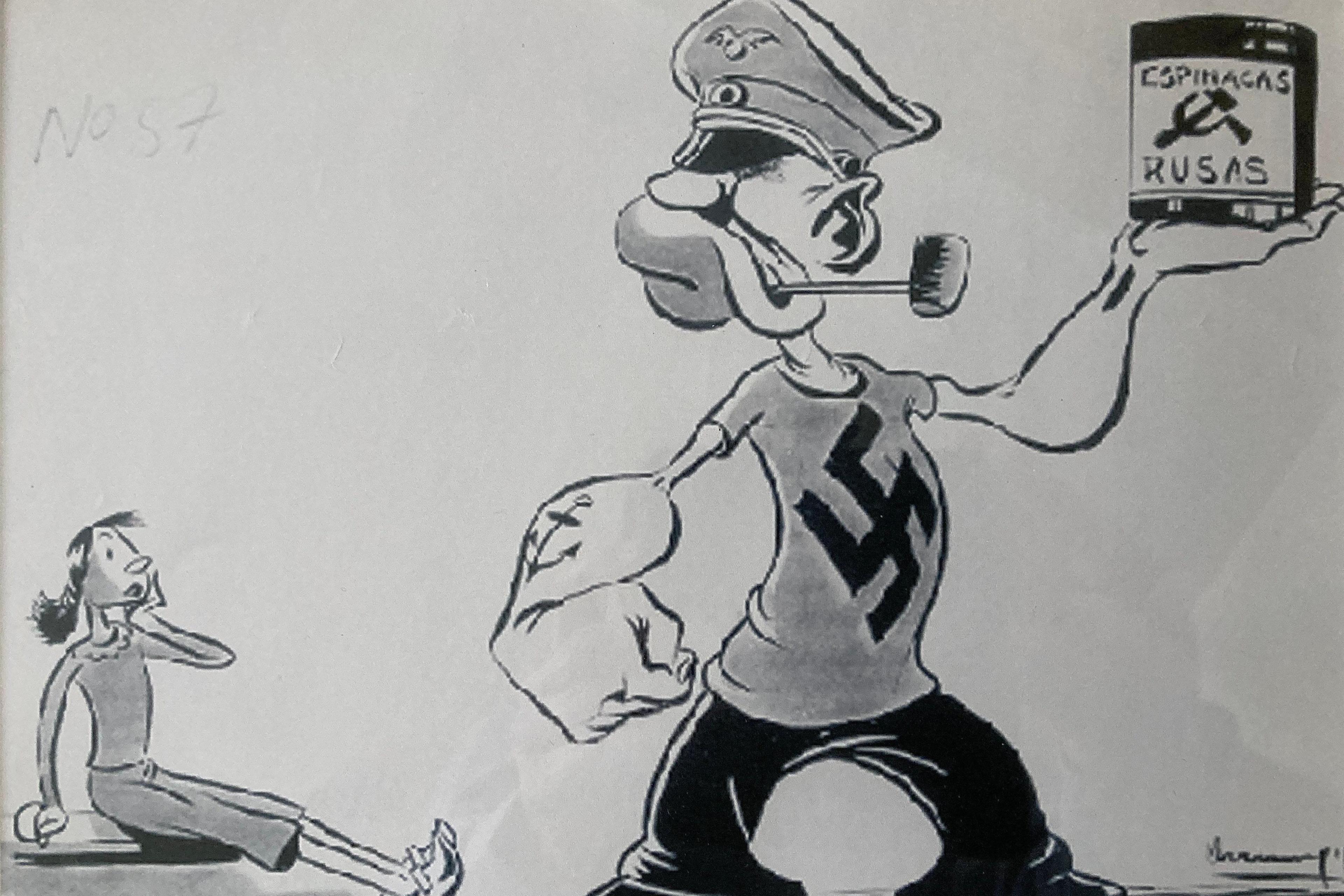
Hitler depicted as a 'Popeye' style character
She said the cartoons were distributed across North and South America, to encourage the Americans to join the war, and across Europe, even going in to underground publications in occupied countries.
Later in life Mr Armengol and Lindah Kiddey's mother, Rolindez De Madariaga, lived together in Nottinghamshire and are buried in the same plot at Radcliffe-on-Trent cemetery.
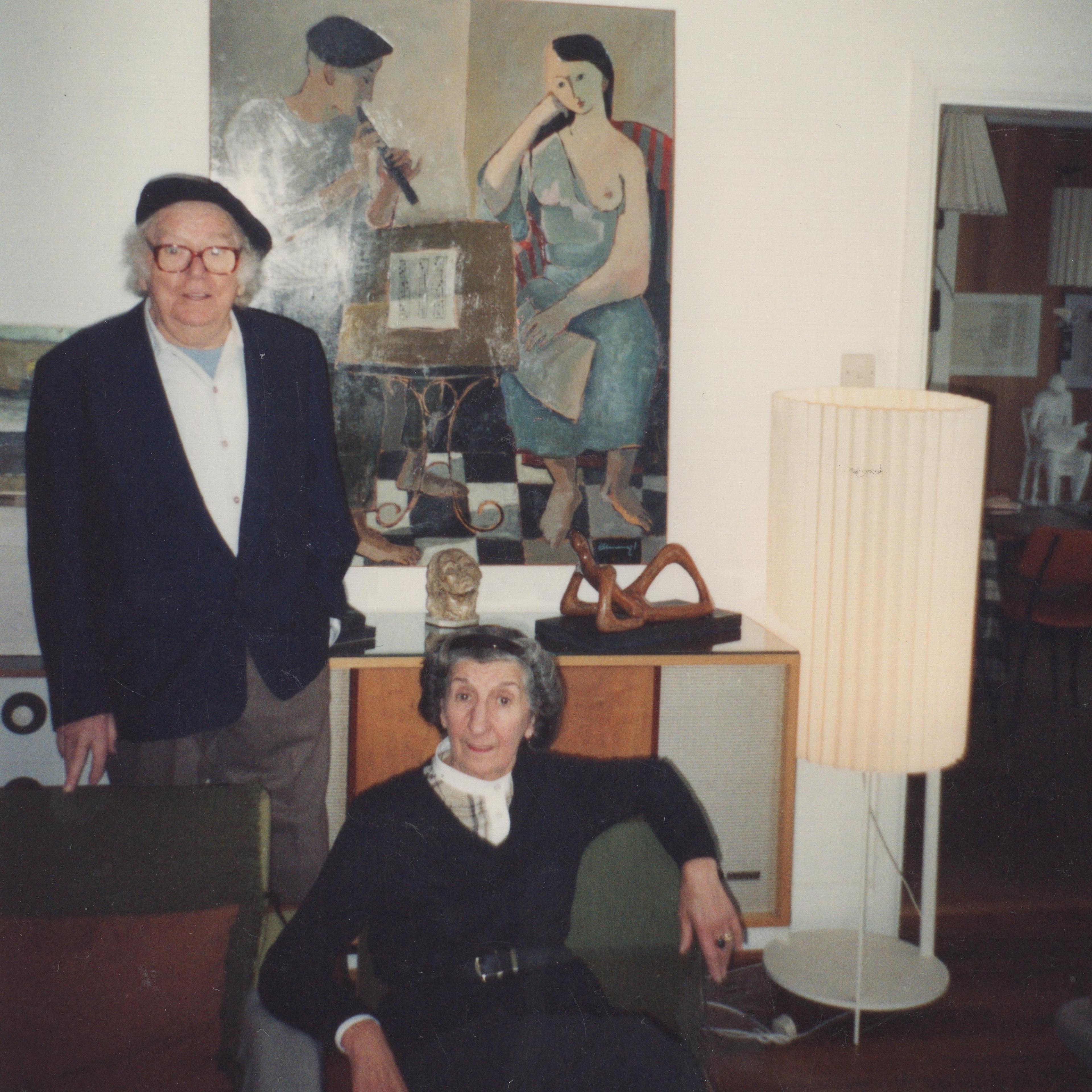
Mario Armengol later in life with Rolindez De Madariaga
Ms Kiddey said she hoped a new documentary being produced by two Spanish journalists, as well as art exhibitions that have taken place in Spain, will all help to introduce his work to a wider audience.
"The war cartoons stand alongside any of the major cartoonists of the time, in terms of caricature and content.
"His fine art is magnificent and his industrial and commercial design is also wonderful," she said.
The new documentary about the life of Mario Armengol is due to be out in 2026.
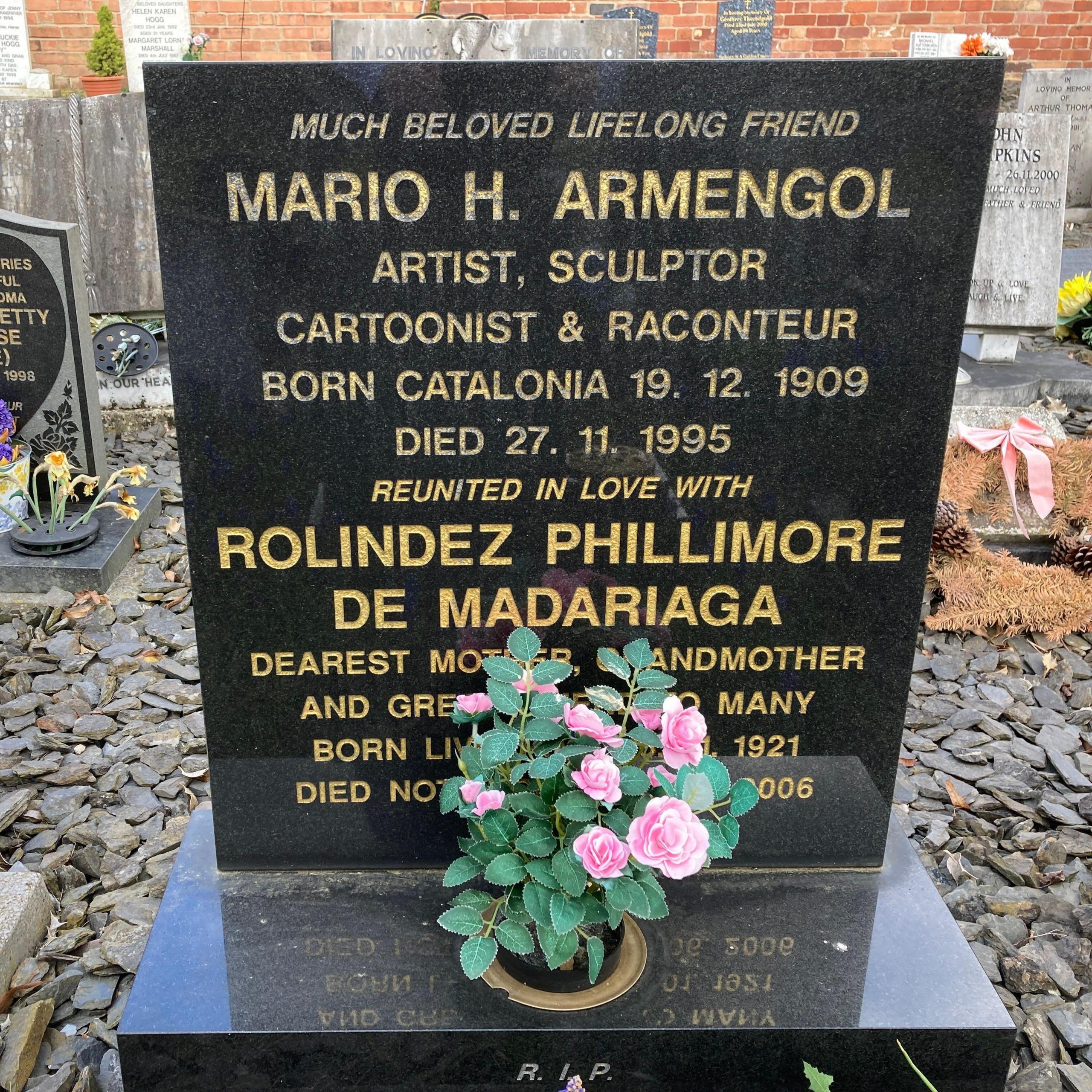
Mario Armengol is buried at Radcliffe-on-Trent Cemetery with Rolindez De Madariaga
Get in touch
Tell us which stories we should cover in Nottingham
Follow BBC Nottingham on Facebook, external, on X, external, or on Instagram, external. Send your story ideas to eastmidsnews@bbc.co.uk, external or via WhatsApp, external on 0808 100 2210.
Related topics
- Published7 October 2014